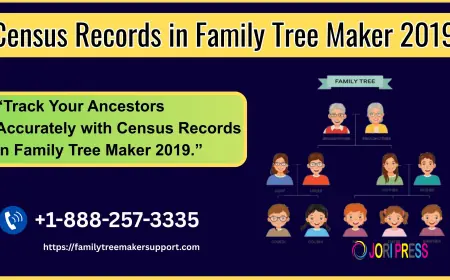How to Build a Decentralized Stablecoin in 2025?
Learn how to create a decentralized stablecoin in 2025 with smart contracts, robust tokenomics, and community-driven governance.

The cryptocurrency ecosystem has grown dramatically over the past decade, evolving into a complex and globally influential market. Among its innovations, stablecoins have become essential, bridging traditional finance and decentralized digital economies. Unlike volatile cryptocurrencies like Bitcoin or Ethereum, stablecoins maintain a stable value, often pegged to fiat currencies or commodities. This stability makes them useful as mediums of exchange, stores of value, and units of account within the decentralized finance (DeFi) landscape.
Building a decentralized stablecoin in 2025 involves a careful balance of technology, economic design, and community governance. Unlike centralized stablecoins, which rely on a single entity to manage reserves, decentralized stablecoins leverage smart contracts, blockchain protocols, and algorithmic mechanisms to maintain their value. These systems are transparent, trustless, and resilient.
This guide walks through the process of creating a decentralized stablecoin, covering tokenomics, collateral models, governance, legal considerations, security, launch strategies, and long-term maintenance. It provides a practical blueprint for developing a sustainable and efficient stablecoin ecosystem.
Understanding Decentralized Stablecoins
Decentralized stablecoins differ from centralized ones in how they maintain value. Centralized stablecoins depend on a trusted entity to manage reserves, whereas decentralized versions rely on algorithms, smart contracts, and blockchain transparency. DAI from MakerDAO is a prominent example, using over-collateralized loans to keep its peg stable.
The key advantages of decentralized stablecoins include trustlessness, censorship resistance, and interoperability with DeFi applications. Users can interact with these stablecoins without relying on a central authority, and they can be integrated into lending, borrowing, and trading platforms across multiple blockchain networks. Understanding these principles is crucial to designing a stable, resilient stablecoin.
Define Objectives and Use Cases
The first step is defining the stablecoin’s objectives and intended applications. Determine whether the stablecoin will serve as a medium of exchange, a unit of account, a collateralized token, or a DeFi liquidity tool. Clear objectives help shape tokenomics, governance, and technical architecture.
Consider the peg will it track USD, EUR, gold, or a basket of assets? Identify the target audience, whether retail users, DeFi protocols, or institutions. Decide on the level of decentralization needed. These decisions guide blockchain selection, smart contract design, and compliance measures.
Design Tokenomics and Collateral Mechanisms
Tokenomics is central to maintaining stability and incentivizing participation. There are several approaches:
-
Collateralized Stablecoins: Backed by crypto, fiat, or commodities. Over-collateralization protects against market volatility. Single-collateral models are simpler but riskier, while multi-collateral systems diversify risk.
-
Algorithmic Stablecoins: Use supply adjustments through smart contracts. Tokens are minted or burned to maintain the peg. These require robust models to avoid destabilization.
-
Hybrid Models: Combine collateral and algorithmic mechanisms for stability with efficiency. Incentives for staking, liquidity provision, and participation are included.
Tokenomics should define supply, redemption rules, and incentives. Well-designed systems maintain trust, liquidity, and long-term sustainability.
Select Blockchain and Smart Contract Architecture
Choosing the right blockchain affects scalability, speed, and interoperability. Ethereum, Solana, Polygon, and Layer-2 solutions are popular options in 2025.
Smart contract considerations include token standards, governance contracts, oracle integrations, and security features. Using modular architecture allows upgrades and integration without compromising decentralization. Decentralized oracles ensure accurate pricing for collateral-backed stablecoins. Security mechanisms like multi-signature wallets and time locks protect the protocol.
Governance Model
Decentralized governance ensures sustainability. It governs collateral types, minting policies, fees, and upgrades. Common models are:
-
Token-Based Voting: Holders vote on proposals, aligning incentives but possibly favoring large participants.
-
Quadratic Voting: Reduces whale influence through non-linear vote weighting.
-
DAO Governance: A Decentralized Autonomous Organization manages treasury, upgrades, and parameters transparently.
Active governance builds trust and ensures adaptability to market changes or regulatory developments.
Security and Auditing
Security is critical due to the value locked in stablecoins. Steps include smart contract audits, formal verification, and bug bounty programs. Emergency mechanisms such as pause functions or decentralized insurance mitigate risk. Continuous monitoring and automated alerts help maintain stability, especially during high volatility.
Legal and Regulatory Compliance
Decentralized stablecoins face increasing regulatory scrutiny. Compliance with AML, KYC, and reporting requirements is essential, even without a central authority. Consulting legal experts, designing protocols with compliance features, and maintaining transparency reduces risk and enhances credibility in the market.
Launch Strategy
A well-planned launch is crucial. Ensure sufficient initial collateral and liquidity. Educate the community on mechanics, risks, and governance. Form partnerships with wallets, exchanges, and DeFi protocols to expand adoption. Phased launches, testing, and liquidity incentives reduce risk and attract early users.
Post-Launch Maintenance and Scaling
After launch, ongoing management is key. Maintain liquidity through decentralized exchanges and AMMs. Encourage governance participation and propose updates based on community feedback. Modular contracts allow upgrades, while cross-chain deployment expands reach and utility. Engagement and iterative improvements sustain adoption and stability.
Case Studies and Lessons
Studying successful and failed stablecoins offers insights. DAI demonstrates the importance of over-collateralization and strong governance. Algorithmic-only stablecoins like TerraUSD highlight risks of inadequate collateral and weak risk management. Hybrid models like Frax show the value of balancing collateral with algorithmic mechanisms.
These lessons emphasize risk management, transparent tokenomics, and active governance as critical to long-term success.
Conclusion
Creating a decentralized stablecoin in 2025 requires careful planning across tokenomics, governance, security, and regulatory compliance. By leveraging blockchain protocols, smart contracts, and decentralized oracles, developers can build stablecoins that are reliable, transparent, and censorship-resistant. Lessons from past projects highlight the importance of risk management, community engagement, and robust economic design.
A well-executed decentralized stablecoin can drive adoption in DeFi, provide a reliable medium of exchange, and bridge traditional and decentralized finance. By following best practices in design, governance, and maintenance, stablecoins will continue to play a pivotal role in the evolving cryptocurrency landscape.
What's Your Reaction?
 Like
0
Like
0
 Dislike
0
Dislike
0
 Love
0
Love
0
 Funny
0
Funny
0
 Angry
0
Angry
0
 Sad
0
Sad
0
 Wow
0
Wow
0



















































